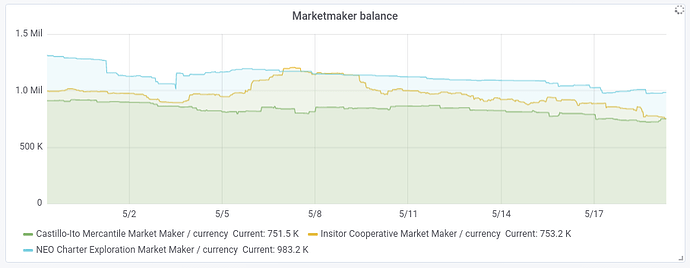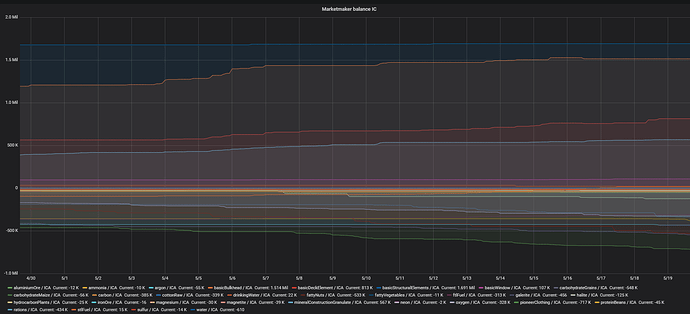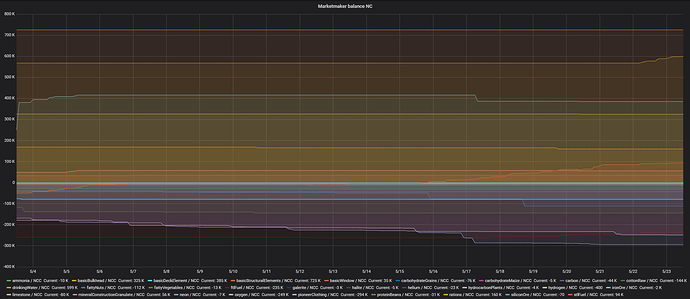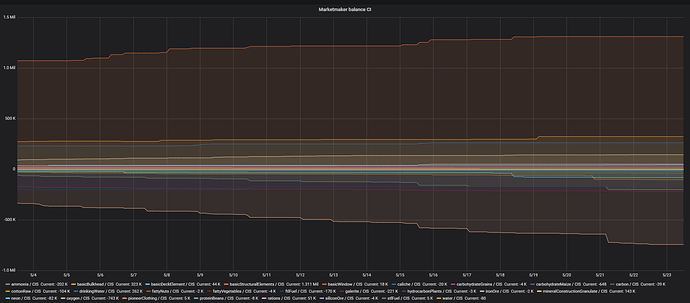Molp, thanks for the reply.
That’s interesting data, but please be careful about concluding “we [don’t] need another money source at the time being.” If you get this wrong and restrict money excessively, you may lose players and decrease the satisfaction of those who stay. The real trouble here is how limited money can choke trade.
The second chart you posted has a useful figure of the money supply compared to the number of companies. If it’s increasing at 1% a week, as best I can read in the chart, that’s 67% annually. After a year of play, companies can grow, on average, from 30,000 NCC (or whatever currency) to 50,100. That feels slow to me, and since I want the game to succeed, I worry about players losing, ah, interest.
But the bigger question isn’t addressed at all by this data. The growth of the money supply should match the growth in production, else the money supply throttles trade - and trade is the lifeblood of this game.
As players accumulate more goods, added to the game from extraction and production, they can trade for more things they want - but without appropriate growth in the money supply, less freely than either party might like. A company could have enough Consumables, say, to trade for goods that can make a new building (fun!), while another company would trade those building inputs for the Consumables, but they can’t actually swap goods without comparable currency. Limited money means they have to do that exchange over multiple trades, slowing the process.
People see this limitation in the developed world when selling houses. Two people swapping houses - one downsizing, say, and one upgrading - each have the assets for a trade but usually not the liquidity to make such a purchase until their own sale is complete. Loans bridge the gap, just as in developing nations where banking is limited, barter enables daily exchange. Apex doesn’t allow loans or barter, as far I as I know.
If the money supply grows more slowly than the stock of goods, money will limit how often players can trade. Just as more trade can be more fun, less trade is a problem.



 )
)
